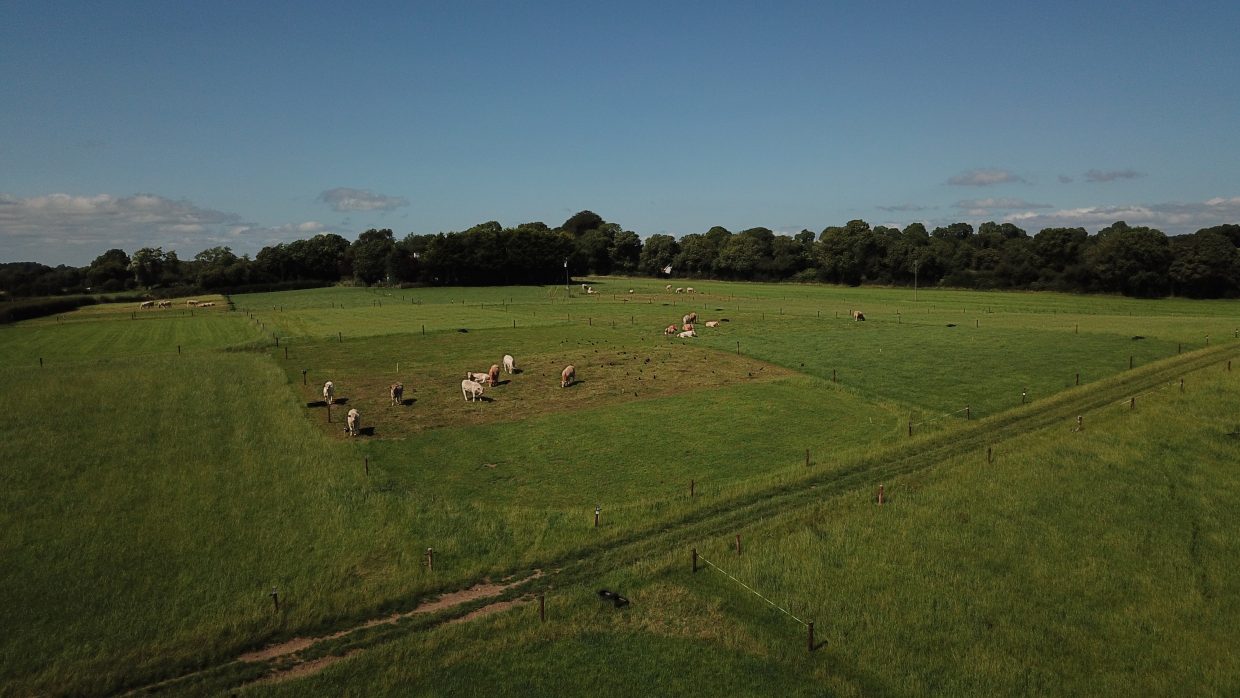Maximising beef cattle growth on our cheapest feed resource
The paper “Effect of pre-grazing herbage mass and post-grazing sward height on herbage production and intake and performance of suckler-bred steers within a weanling-to-beef production system“, published in The Journal of Agricultural Science, has been chosen as the latest Editorial Highlight and is freely available to download for one month.
Suckler beef systems in temperate climates are designed to offer a high inclusion (92%) of grazed and conserved herbage in the animal’s diet, as grazed pasture is the cheapest prevalent feed source. However, more expensive concentrates are commonly offered to beef cattle to ensure sufficient carcass weight gain and fat deposition prior to slaughter. Identifying grazing management technologies that increase individual animal live-weight gain and stocking rate from grazed pasture, coupled with minimizing the use of concentrates, could increase profitability in grass-based beef production systems.
Within technically efficient rotational grazing systems, pre-grazing herbage mass (PGHM – the quantity of herbage in the field prior to grazing) and post-grazing sward height (PGSH – the height of herbage remaining in the field after grazing) are reported to influence animal performance. This study analysed the effect of 2 pre-grazing herbage masses (PGHM 1500 or 2500 kg DM/ha) x 2 post-grazing sward heights (4 or 6 cm) on (1) the accumulation and nutritive value of herbage, (2) grazing behaviour, intake and growth of suckler-bred steers grazing these pastures, (3) the subsequent impact of indoor finishing diet (grass silage only or grass silage + concentrates) on performance and carcass characteristics, and (4) the overall carcass gain/ha of these grazing systems.
The ‘recommended’ post-grazing sward height guideline of ca. 4 cm, is unsuitable for growing cattle grazing pasture as it restricted animal growth at pasture by 0.16 kg/day (34 kg across the grazing season), compared to a post-grazing sward height of 6 cm, mainly due to a consistently higher intake across the grazing season. Following housing, the differences in animal live-weight in favour of PGSH-6 at the end of the grazing season were retained throughout the indoor finishing period and resulted in a 19 kg heavier carcass. If steers were drafted for slaughter based on slaughter weight (rather than at the same time point), it is estimated that PGSH-4 steers would require an additional 58 and 24 days on silage only and silage + concentrate diet, respectively, to obtain the same carcass weight as PGSH-6 steers. However, carcass gain/ha did not differ between treatments, as PGSH-6 achieved a lower stocking rate due to a higher intake demand and slightly lower herbage production.

Grazing a lower pasture mass (PGHM-1500 vs. PGHM-2500), increased animal growth by 16 kg at the end of the 222 day grazing season. The superior animal growth was only manifested in the second half of the grazing season due to superior herbage nutritive value for PGHM-1500. However, after the indoor finishing period, the live-weight gain advantage for the lower PGHM was dissipated on both finishing diets, due to compensatory growth. Both pre-grazing herbage mass systems achieved a common stocking rate and consequently carcass gain output/ha did not differ after an indoor finishing period.
All steers receiving concentrate supplementation during the indoor finishing period were ‘fit for slaughter’; whilst, the majority (83%) of silage only (no concentrates) steers achieved this target.
In conclusion, grazing to 6 rather than 4 cm, increased individual carcass weight but not carcass weight gain/ha. Compared to PGHM-2500, grazing PGHM-1500 increased steer live-weight gain at pasture, but did not affect carcass weight following indoor finishing.
The Journal of Agricultural Science Editorial Highlights are selected by the Editor-in-Chief and are freely available for one month. View the recent selections here.






